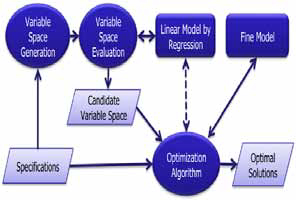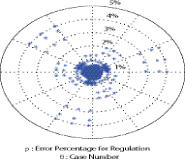Comprehensive Optimization and Practical Design of DC-DC Converters under Multiple Competing Performance Demands
Yingying Kuai with advisor P.L. Chapman
This work develops a comprehensive optimization approach for DC-DC converter under several competing performance demands. The emphasis is to achieve practical design solutions within a short processing time in order to minimize prototyping efforts and eliminate iterative procedure. The study is presented through the context of voltage regulator (VR) design, which exemplifies
a synchronous buck converter under strict transient and steady-state specifications, and illustrates the advantage and flexibility of the proposed approach clearly. However, the proposed approach is easily applicable to other
systems under similar conditions.
Balancing trade-offs among several requirements is a constant theme in power electronic systems design. Two alternative paths are commonly followed: conventional
iterative prototyping procedures and optimization methods, both of which require a subjective evaluation of the importance of each requirement. The priority structure of all the requirements leads to optimal or near-optimal
solutions that are biased with best performance in only one or several specifications. In applications where a system is required to satisfy a set of competing specifications, an optimal solution is hard to achieve using either approach. In the proposed approach, a single-objective, multi-constraint structure ensures that all specifications are treated with equal priority, and that no pass-or-fail specifications are unnecessarily optimized. Human intervention in the initializing stage is minimized by creating a preliminary design process.
Figure 30 shows the top-level structure of the whole system. The preliminary design process includes two blocks: variable space generation and evaluation. Variable space evaluation involves simulating the whole variable space, which is large and unrealistically time-consuming. To simplify the models such that enumerating a variable space can be achieved within a short time, linear regression analysis has been applied. In Figure 31, regression residuals for one of the VR specifications are plotted as a percentage on a polar system. The plot shows that the majority of residuals fall within a 2% error range, and that linear regression models could
represent an accurate estimation of system performance. Experimental regression results will be produced and compared with simulated results. The preliminary design process improves objectivity in the solutions, and
enables the optimization system to achieve results that are closer to the true optimum for competing
constraints.
This research is funded by the Grainger Center for Electric Machinery and Electromechanics.

